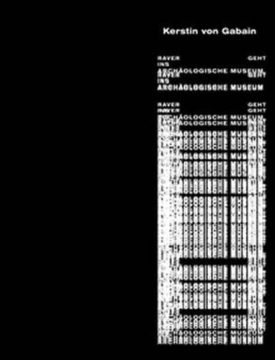Creating a performative interplay with sculpture, translating this interplay into the medium of photography, as well as bridging classical antiquity and contemporary culture in an unorthodox manner are all key aspects of the series of works which von Gabain has produced for her show in the Secession. The dialogue between sculptures and photographs engenders a spatial situation whose ambiguous nature is further heightened by almost casual inter¬ventions including a sound installation in the staircase (in collaboration with Johann Neumeister) and objects discreetly placed here and there as though at random.The blending of “high” and “low,” of black-tie and popular culture, is an integral part of von Gabain’s art; it is not so much a critique of classificatory models as rather a self-evident result of daily practice and the reality of individual experiences.
For her most recent work von Gabain took inspiration from a publication accompanying a symposium on archaic Greek art from the 1960s that awakened her interest in the forms in which archaeological objects are displayed. Greek sculptures and modes of presentation typically found in archaeological museums provided the initial model for von Gabain’s casts and photographs, but as the work progressed, she increasingly liberated herself from this approach in favor of grotesque and macabre productions. Her playful engagement with the materials gradually gave rise to a humorous “culture clash” between antiquity and the music cultures of raves and techno music. The photographs of plaster casts of limbs—some embedded in narrative theatrical productions—and assemblages made of plaster fragments are based on Gabain’s extended experimentation with the sculptures. Rather than being the final product at the end of an artistic process, her sculptures represent a starting point for playful enactments which she then captures in analogue, black-and-white photographs. The artist photographed the individual sculptures isolated against a black background with a seemingly objective eye—an eye that imitates the sober and systematic recording of objects in a style reminiscent of the photographs used to document and inventory collections in museums or for scientific research. The formal rigor of the photographs is undermined by absurd exaggeration: consider poses such as “dancing” feet and the staging of the objects. Moreover, the grounding in reality becomes unclear when, for example, she puts shoes on casts of legs, decorates an arm with a wristwatch, or has a person wearing a hoodie holding a fragment of a shod leg behind their back. If the (Greek) Urfuß (primordial foot) represents one end of a spectrum, fleeting, temporary arrangements such as the assemblages 6 Raver (6 Ravers), “faces” composed of fragmentary casts of beer cans, bottle bottoms, and cigarettes mark the other extreme.
- Veröffentlicht am Montag 23. Dezember 2024 von Revolver Publishing
- ISBN: 9783957630131
- 64 Seiten
- Genre: Hardcover, Kunst, Softcover
